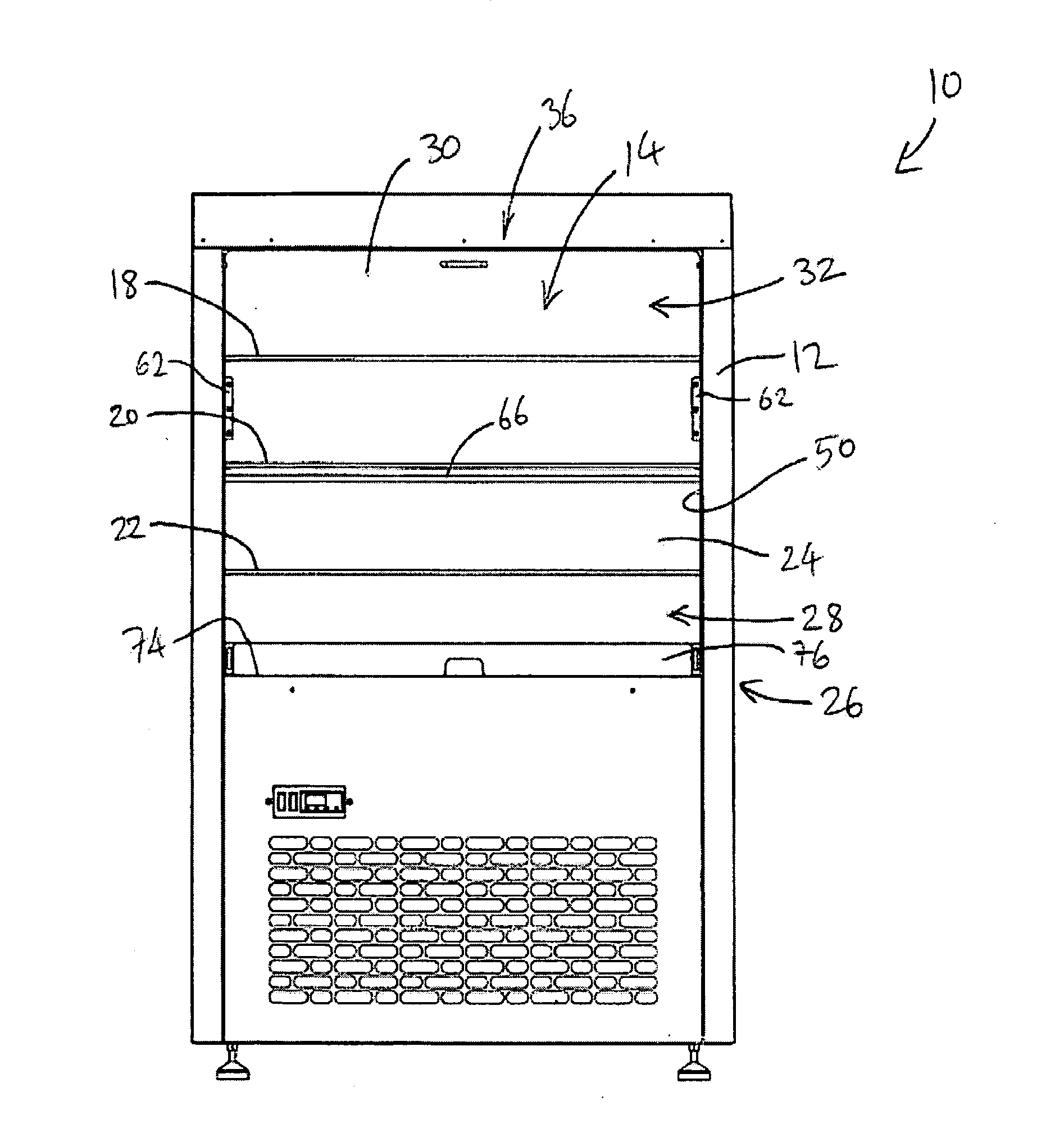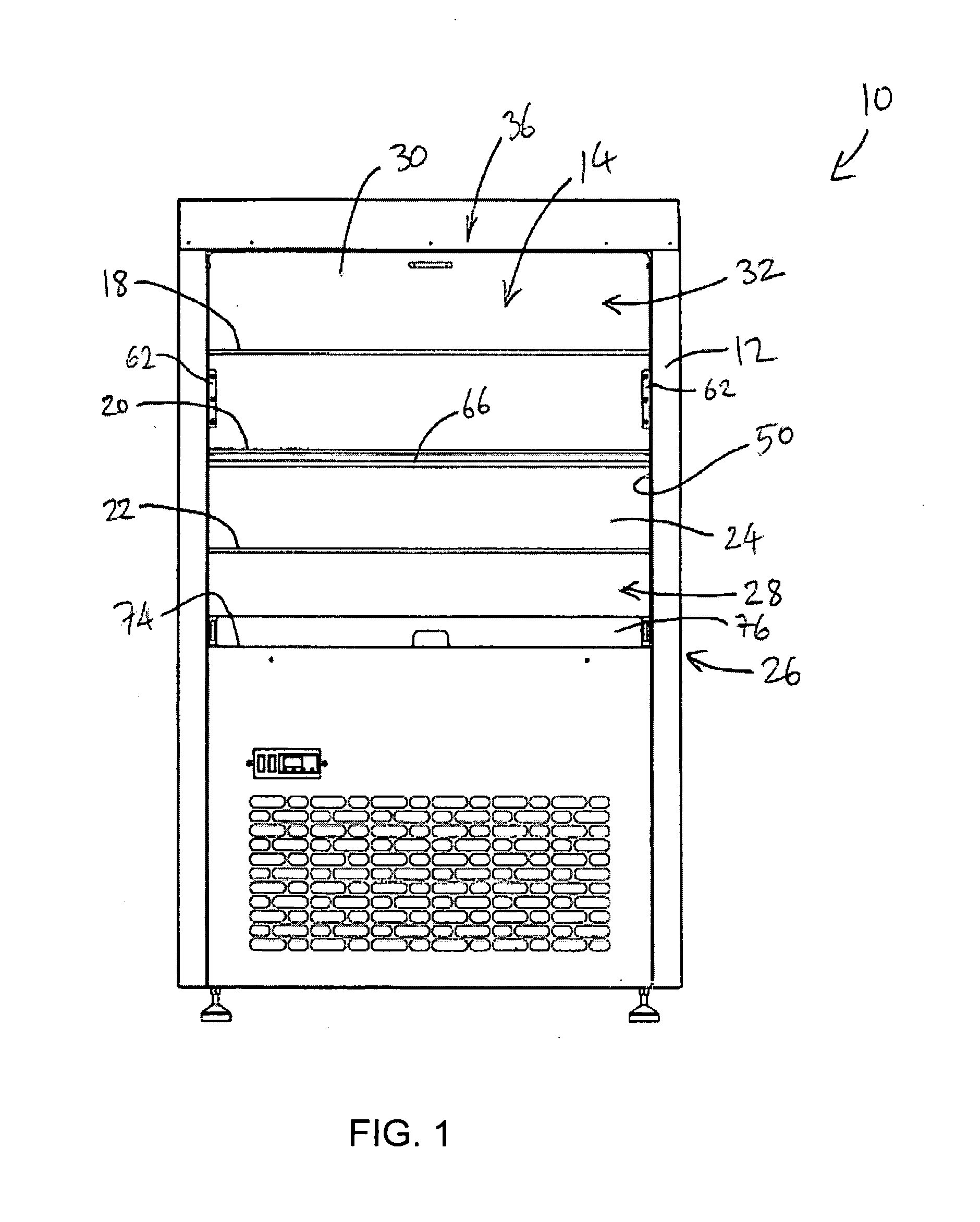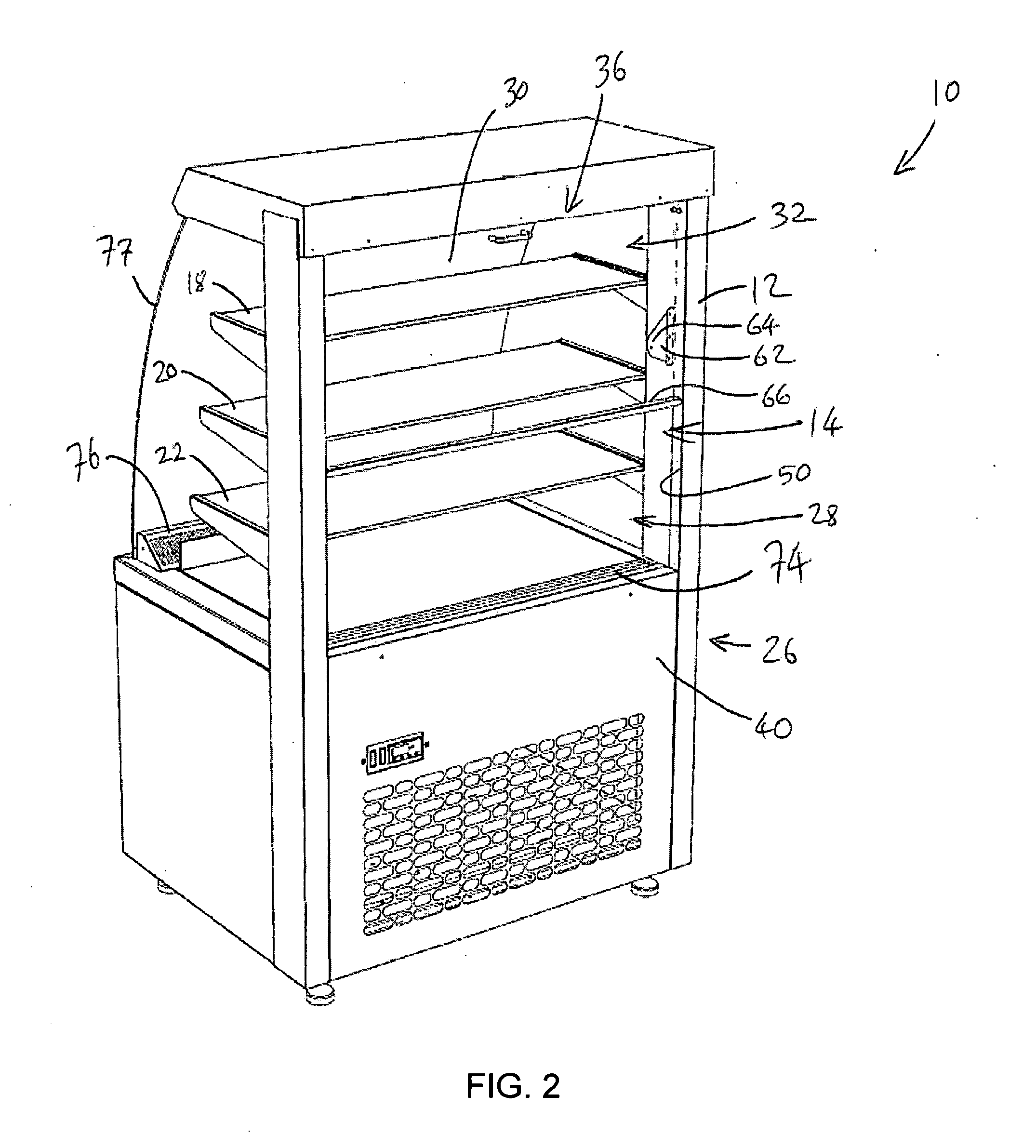Refrigerated Display Cabinet
- Summary
- Abstract
- Description
- Claims
- Application Information
AI Technical Summary
Benefits of technology
Problems solved by technology
Method used
Image
Examples
Embodiment Construction
[0043]Embodiments of the present invention will now be described, by way of example only, with reference to the foregoing drawings. The foregoing drawings are not intended to define a cabinet which has specifically front or rear facing doors and it is assumed that the cabinet and thus the doors can face in either direction.
[0044]Turning firstly to FIGS. 1 and 2, there are shown elevation and perspective views, respectively, of a refrigerated display cabinet in accordance with an embodiment of the present invention, the cabinet indicated generally by reference numeral 10. The cabinet 10 is also shown in FIGS. 3, 4 and 5 which are schematic side views showing the cabinet in use.
[0045]The cabinet 10 generally comprises a housing 12 which defines a display chamber 14. The cabinet 10 also comprises a refrigeration system 16 (FIGS. 3 to 5), for circulating refrigerated air around the chamber 14. At least one shelf is mounted in the chamber 14, for receiving items to be displayed and, in t...
PUM
 Login to View More
Login to View More Abstract
Description
Claims
Application Information
 Login to View More
Login to View More - R&D
- Intellectual Property
- Life Sciences
- Materials
- Tech Scout
- Unparalleled Data Quality
- Higher Quality Content
- 60% Fewer Hallucinations
Browse by: Latest US Patents, China's latest patents, Technical Efficacy Thesaurus, Application Domain, Technology Topic, Popular Technical Reports.
© 2025 PatSnap. All rights reserved.Legal|Privacy policy|Modern Slavery Act Transparency Statement|Sitemap|About US| Contact US: help@patsnap.com



